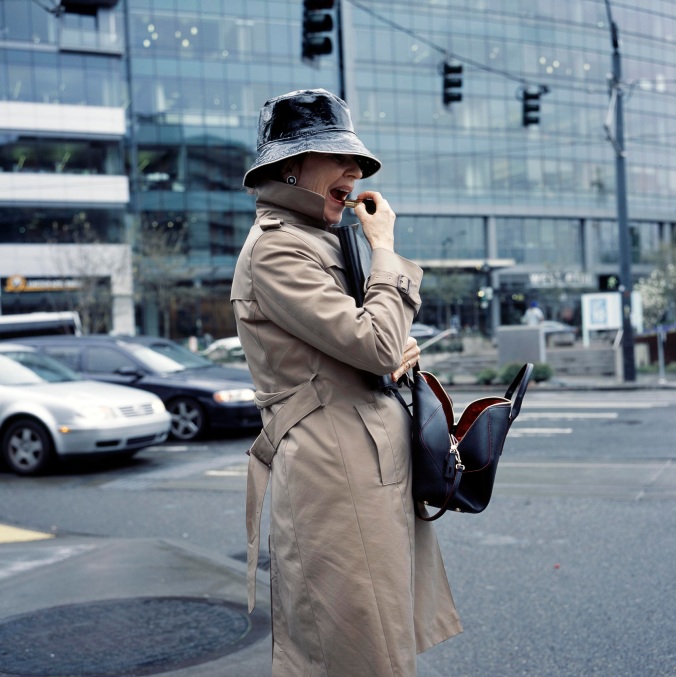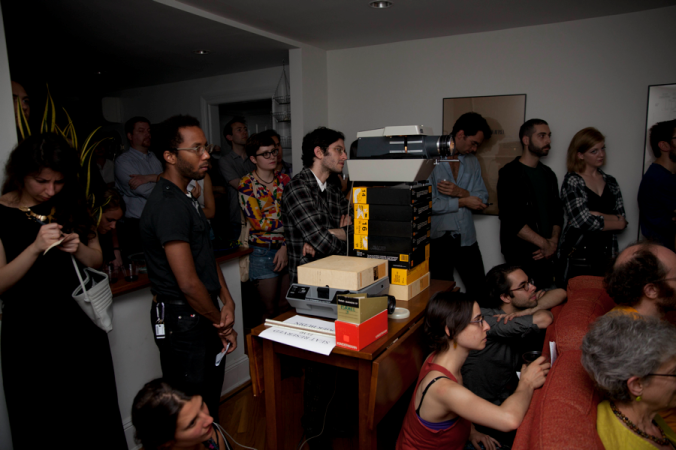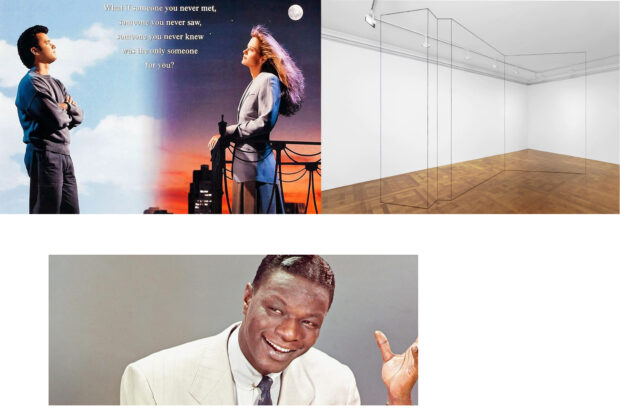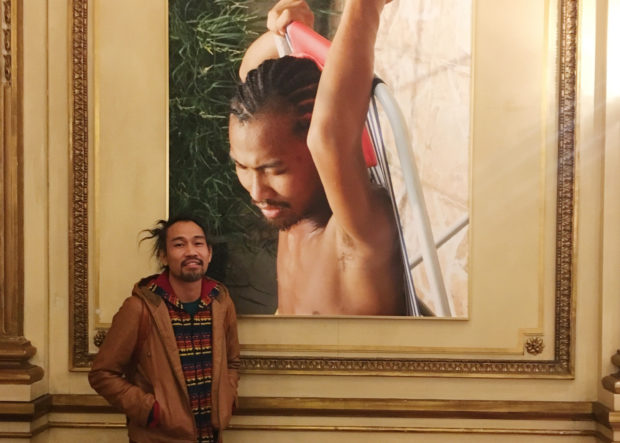An oft-forgotten fact about Ad Reinhardt, the American artist best known for his black monochrome paintings, is that he was an avid photographer who made a practice of presenting his pictures in slideshow format. Throughout the 1950s and ‘60s, he showed hundreds of slides from his travels to his colleagues and to Hunter College students in rapid-fire succession. Reinhardt grouped images by formal and compositional qualities irrespective of geography or culture, hoping to overpower viewers’ capacity for identification and to induce a new way of looking. Long attention spans, Reinhardt thought, were in increasingly short supply. In the face of a mounting onslaught of modern distractions, only time and patience would reward the diligent observer.

In terms of photographic technology, a lot has happened since Reinhardt’s presentations, but his ideas about an image’s ability to condition and edify its audience are not out of date. Last Saturday evening, a living room slideshow also sought to provide a counterpoint to the normal circumstances of contemporary art production and consumption. It was a festive conclusion to photographer Samuel Budin’s month-long stay at Room & Board, an “experimental residency” run by IFA doctoral student Julia Pelta Feldman. For a month, Budin lived at Feldman’s home in Williamsburg; while saving a month’s rent (no laughing matter in New York), Budin worked closely with Feldman to finalize the exhibition Northwestern Chromes and Other Chromes, a two-part documentation of his travels in the Pacific Northwest.
Feldman and artist Daniel Fishkin, a friend and the program’s inaugural resident, established the residency as a response to “the ridiculous bureaucracy of the art world and how it often stifles genuinely experimental endeavors,.” as Feldman put it. This past summer, Fishkin composed a “laptop orchestra,” which he rehearsed and performed with a group of friends in Feldman’s kitchen using only the digital voices from computers.

The culmination of Budin’s residency was a convivial, participatory salon. The series “Other Chromes” illuminated the bathroom, rainbows of vintage candy decked the tables, and each visitor received a red raffle ticket that granted access to a private audience (and mystery slideshow) with Budin in the upstairs bedroom.

But the apex of the evening came when Budin unveiled “Northwestern Chromes.” Standing next to the projector, dapperly dressed in a funky, checkered suit, the artist manually advanced each slide, narrating his journey and fielding questions from the audience. In one anecdote, Budin related how he had hoarded slide film when he learned that companies would stop its fabrication. Budin’s medium-format photographs formed the most striking elegy to this disappearing film format When exposed and projected just so, slide film produces an image that glows with hallucinatory saturation and intensity; with the larger light-sensitive surface characteristic of medium-format film, the effect of Budin’s photographs was even more bewitching. Beyond the optical enchantment of the slide format, Budin’s knack for turning otherwise mundane street scenes into tight, geometric compositions brought to mind Lee Friedlander and others whose style mingles documentary with social commentary. Some of the subjects populating Budin’s photos, like the neon-clad dockworker, look directly at the camera and pose or smile. Others might be vagrants, asleep in the ferry or ambling threadbare through a vacant street, with a lavender-painted building behind and the evergreens beckoning ahead.

Although the resuscitation of analog film processes can seem like an exercise in nostalgia, Budin’s show-and-tell made it clear that when certain kinds of film go extinct, they take their particular genre of storytelling down with them, too. Whereas Reinhardt’s slideshows, cartoons, and paintings insist on long-form looking, Budin’s series remind us that some things are best enjoyed in person, made with, by, and for friends.





Be First to Comment